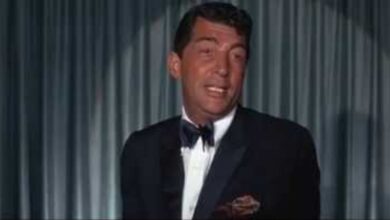The Authentic Sound of The Soggy Bottom Boys in “Man of Constant Sorrow”
“Man of Constant Sorrow” stands as a significant piece within the American folk music canon, rich with emotional depth and historical resonance. Its roots can be traced back to the early 20th century, with some historians suggesting it emerged from the Appalachian region, where the oral tradition of storytelling through song flourished. The song reflects the broader struggles of the rural working class, encapsulating feelings of despair, longing, and the relentless human spirit in the face of adversity. As a result, it resonates not only as a song but as a cultural artifact that captures the essence of life’s hardships.
The narrative of the song revolves around a man who laments a life filled with sorrow and a sense of continuous wandering. Many interpretations see this character as an embodiment of those who have faced systemic injustices, poverty, and personal tragedies across different eras. This connection to the human condition ensures that the song remains relevant and poignant, as it speaks universally to experiences of grief and loss that transcend specific events or time periods. It’s a song that taps into collective memory, allowing each listener to find their own stories woven through its lyrics.
The song gained renewed prominence with the release of the Coen brothers’ film “O Brother, Where Art Thou?” in 2000, where it was featured as a central piece within the soundtrack. The Soggy Bottom Boys, the film’s fictional band portrayed by actors including George Clooney, evoke the struggle for freedom and redemption against a backdrop of the Great Depression. Their journey through hardship mirrors the themes of the song itself, allowing “Man of Constant Sorrow” to serve as both narrative framework and emotional anchor within the film. As audiences connected with the story and its characters, the emotional power of the song became intertwined with the broader cultural narrative of the film.
Dan Tyminski’s heartfelt rendition in the film brought a new dimension to “Man of Constant Sorrow.” His powerful vocals and sophisticated guitar work breathe life into the song, transforming it into a modern classic, yet rooted in tradition. Tyminski’s ability to convey deep emotion through his performance has earned him respect within both bluegrass and country circles, further solidifying this rendition as iconic. His work with Alison Krauss and Union Station has also contributed to the revival of interest in bluegrass music, helping to draw attention to the genre’s rich tapestry of narratives and musical styles.
In addition to Tyminski’s contributions, the harmonies layered by Harley Allen and Pat Enright add a crucial tonal quality that enriches the song’s emotional texture. Harmonization is a vital aspect of folk and bluegrass music, often serving to symbolize community and shared experiences. The blended voices create an inviting sound that fully encapsulates the melancholic themes of the song, inviting audiences to partake in the shared sorrow of the narrative. This collective vocal layering is emblematic of folk tradition, where community and shared experience are at the forefront of musical expression.
The impact of the “O Brother, Where Art Thou?” soundtrack cannot be overstated. It played a pivotal role in reigniting interest in American roots music at the turn of the 21st century. The soundtrack showcased a diverse array of traditional songs and highlighted talented artists, leading to a surge in folk and bluegrass festivals, workshops, and performances across the country. This revival encouraged a new generation of musicians to embrace and reinterpret traditional songs, ensuring the survival of folk music’s legacy.
Throughout the years, “Man of Constant Sorrow” has been covered by many artists across different genres. Each new interpretation brings a fresh perspective, illustrating the song’s adaptability and enduring appeal. From bluegrass bands to rock groups, and even pop artists, the song’s versatility allows it to resonate with diverse audiences. These covers not only breathe new life into the song but also keep its themes relevant, reflecting contemporary struggles while honoring its historical roots.
The song’s legacy extends beyond mere performance; it serves as a portal to understanding the shared struggles of humanity. The nostalgia associated with its themes of loss and longing allows listeners from various backgrounds to connect on a deeper level. Its ability to capture the essence of what it means to endure hardship is what makes “Man of Constant Sorrow” a timeless ballad that continues to evoke empathy and understanding.
As the landscape of music continues to evolve, the appreciation for traditional folk songs like “Man of Constant Sorrow” grows. There is a burgeoning interest in Americana and roots music, leading to a revival that ensures the story of sorrow and resilience echoed in the song will not be forgotten. Dan Tyminski’s contributions, along with those of many others, ensure that the legacy of “Man of Constant Sorrow” will endure, providing solace and connection to future generations.
In conclusion, “Man of Constant Sorrow” remains a haunting reminder of the shared struggles inherent to the human experience. Its journey from a rural folk ballad to a modern cultural phenomenon exemplifies the power of music in telling our stories. Each performance and reinterpretation adds to its rich tapestry, making the song a vital part of America’s musical narrative, echoing the sentiments of sorrow and triumph that characterize the human experience. Whether through film, live performances, or recordings, the song continues to resonate with audiences, ensuring that its poignant message endures through the ages.



